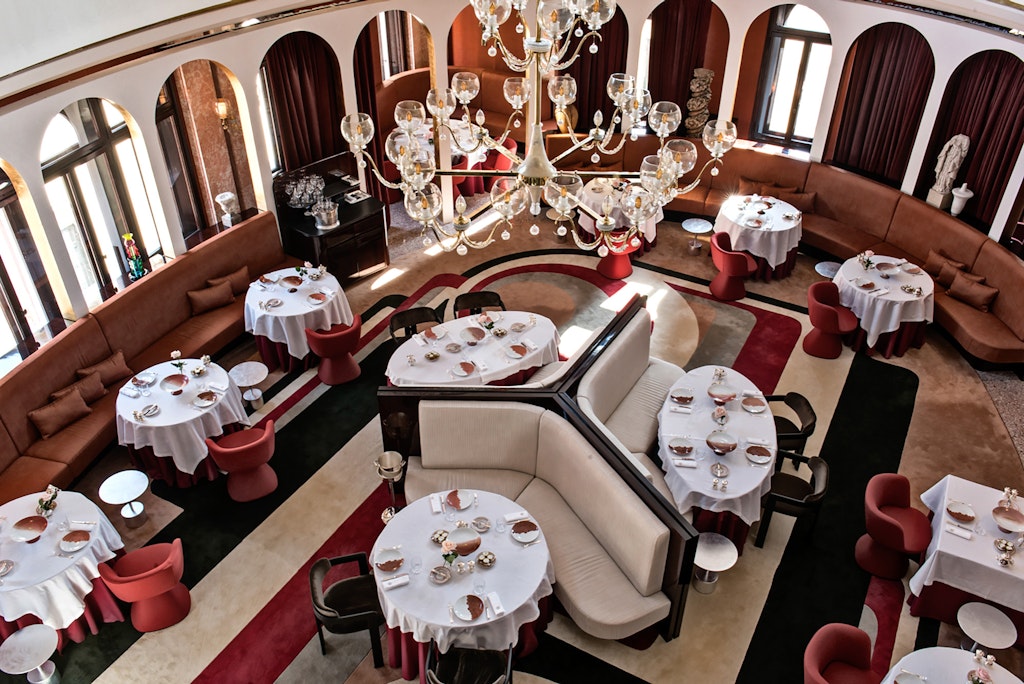If I had a hammer
Do we just need better iconoclasts?
A few hundred yards from my home stands one of the most iconic and beautiful sacred spaces in the world. I’d hazard that most people would recognise the iconic Chapel of King’s College, Cambridge with its fan-vaulted ceiling, its magnificent organ, and breath-taking stained glass. But I wonder how many people are familiar with the figurine in a niche above the door to a little side chapel at the south east end? In the niche is seated a serene stony figure, whose faceless stare begs the observant visitor to stop and think.
About twenty miles down the road, in the church of St Mary Magdalene in Roxton, Bedfordshire stands the remnant of a 16th-century rood screen featuring a painted line up of the usual suspects. There is St Dorothy, discernible by her basket laden with apples and roses, beside her is St Sebastian, flesh riddled with arrows. Except there is something disturbing about these figures. The bodies remain intact but their faces have been scratched out. This, of course, wasn’t the work of well-meaning but incompetent restoration, it was the deliberate act of reform.
Empty niches, whitewashed walls, and spartan sanctuaries all over the country stand witness to the early-modern revolution in Church and State. But these reformers knew that total destruction was not most effective way to communicate their convictions. The more powerful message was to be read in the remaining ruins of a monastery, or in the grisly torso of a decapitated saint, or again in the medieval tombs whose prayers for the soul in purgatory had been painstaking abraded with a chisel.
The debris proclaimed, much more loudly than demolition, the break from the Old Religion and the veneration of images. Whatever you think of their ideology, those chaps knew how to run a pretty effective PR campaign. If you want to leave a lasting message, leave a trace.
This week we have seen all over the media monuments which have been defaced and destroyed. Perhaps the most striking example being the pulling down of a statue of Edward Colston in Bristol. Many such totems remain as shades of our darker past. Liberals will call for their demolition. Reactionaries will cry out to preserve them. But how about the path taken by some of our other predecessors: carefully considered, lawfully executed iconoclasm?
The systematic implementation of iconoclasm was a widespread phenomenon in Tudor and Revolutionary England. However, in the main these alterations were carried out lawfully and carefully, not at the hands of the mob. This ranged from the precise mutilation of images, to emulating the Hussite practice of turning church images to the walls. There they would stand as a stark reminder of where we had come from, lest we forget and repeat the sins of our forefathers.
Inevitably, students at Oriel College have once again begun to cry out that “Rhodes Must Fall.” The fact is that while he represents a significant benefaction to the college, he also represents the exploitation and suffering of a community and this needs to be acknowledged.
But is removing this graven image the answer? An empty niche may serve to balm our consciences but surely it is an obfuscation of our responsibility. We would go from the perceived glorification of our past to pretending it never happened. To whitewash our past is to stifle the voice of our brothers’ blood which cries out from the ground.
Our authorities have a responsibility to act in the interest of the community. Could selective iconoclasm be an imaginative way to make a statement that acknowledges our past but doesn’t let us forget it? Perhaps, instead of destroying all the evidence could we use this as an opportunity to immortalise these lessons? After all, those who do not learn from history, or have left to them history to learn from, are condemned to repeat it.
Enjoying The Critic online? It's even better in print
Try five issues of Britain’s newest magazine for £10
Subscribe














